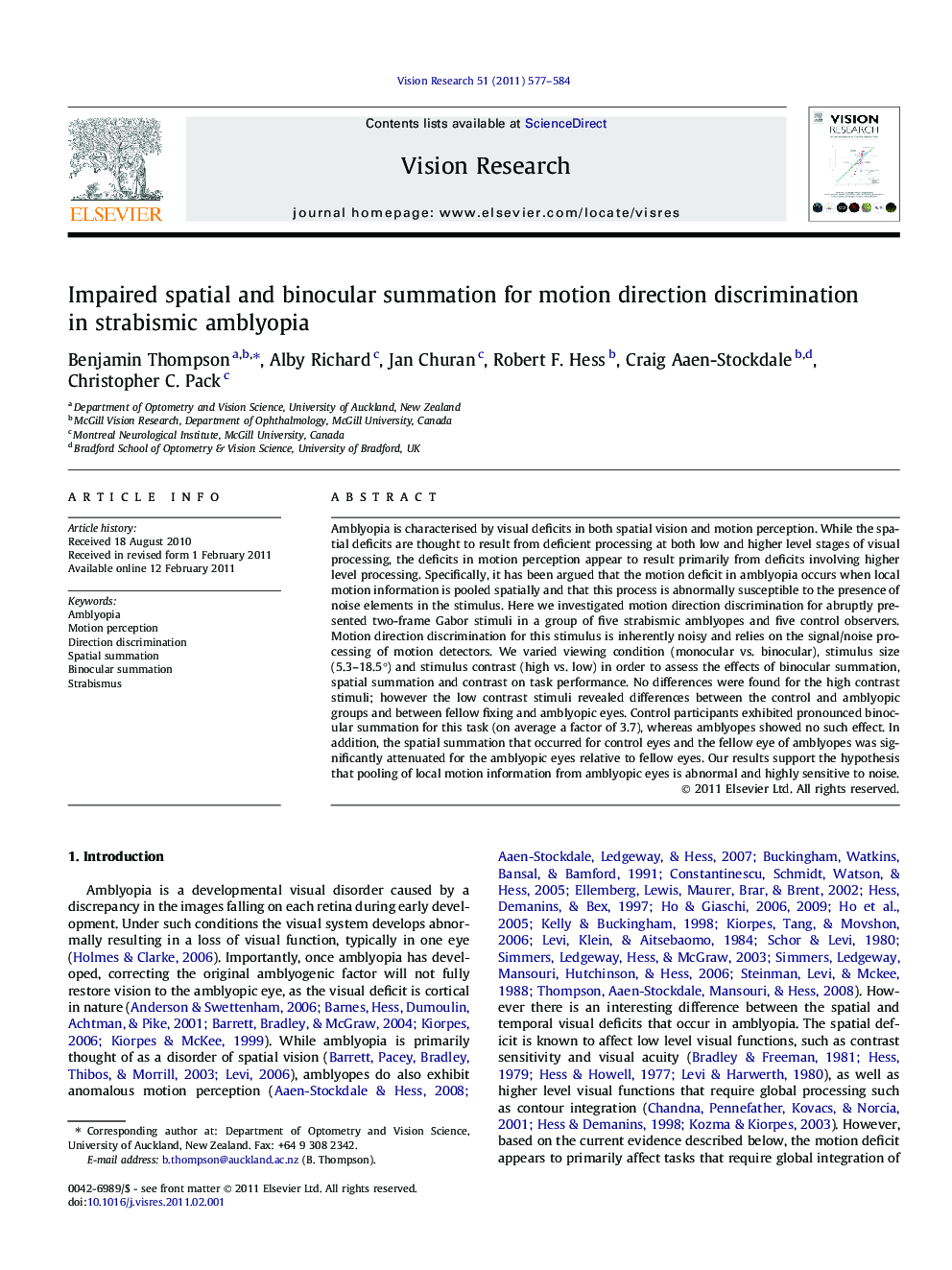| Article ID | Journal | Published Year | Pages | File Type |
|---|---|---|---|---|
| 4034164 | Vision Research | 2011 | 8 Pages |
Amblyopia is characterised by visual deficits in both spatial vision and motion perception. While the spatial deficits are thought to result from deficient processing at both low and higher level stages of visual processing, the deficits in motion perception appear to result primarily from deficits involving higher level processing. Specifically, it has been argued that the motion deficit in amblyopia occurs when local motion information is pooled spatially and that this process is abnormally susceptible to the presence of noise elements in the stimulus. Here we investigated motion direction discrimination for abruptly presented two-frame Gabor stimuli in a group of five strabismic amblyopes and five control observers. Motion direction discrimination for this stimulus is inherently noisy and relies on the signal/noise processing of motion detectors. We varied viewing condition (monocular vs. binocular), stimulus size (5.3–18.5°) and stimulus contrast (high vs. low) in order to assess the effects of binocular summation, spatial summation and contrast on task performance. No differences were found for the high contrast stimuli; however the low contrast stimuli revealed differences between the control and amblyopic groups and between fellow fixing and amblyopic eyes. Control participants exhibited pronounced binocular summation for this task (on average a factor of 3.7), whereas amblyopes showed no such effect. In addition, the spatial summation that occurred for control eyes and the fellow eye of amblyopes was significantly attenuated for the amblyopic eyes relative to fellow eyes. Our results support the hypothesis that pooling of local motion information from amblyopic eyes is abnormal and highly sensitive to noise.
Research highlights► Attenuated spatial summation for direction discrimination in strabismic amblyopes. ► No binocular summation for direction discrimination in strabismic amblyopes. ► Pronounced binocular summation for direction discrimination in controls. ► Strabismic amblyopes have deficient pooling of local motion information.
